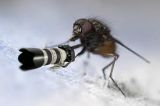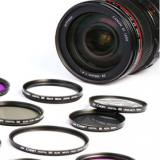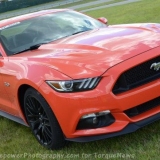- Forum
- Photography and Camera Forum
- Taking the Photo | Editing | The art of Photography!
- Beginner Photography Forum
- I see no difference with UV filter on lens vs no filter.
I see no difference with UV filter on lens vs no filter.
-
 Topic Author
Topic Author
- NormNYC
- Has the Hang of it
-
- Nikon D750
- Followers: 18
- Posts: 71
-
Points:
309
Post #41407
What is a UV suppose to do any way? I did a search here and found a few of you talking about the filter is used as protection, but specifically what does the UV filter side of the filter do any way?
-

- crystal
- Photo Guru
- Nikon D7000
- Followers: 101
- Posts: 3253
-
Points:
75
Post #41420
photo.net/equipment/filters/
UV filters are used to reduce haziness created by ultraviolet light. A UV filter is mostly transparent to visible light, and can be left on the lens for nearly all shots. UV filters are often used for lens protection, much like clear filters. A strong UV filter, such as a Haze-2A or UV17, cuts off some visible light in the violet part of the spectrum, and so has a pale yellow color; these strong filters are more effective at cutting haze,[2][3] and can reduce purple fringing in digital cameras.[4] Strong UV filters are also sometimes used for warming color photos taken in shade with daylight-type film.
en.wikipedia.org/wiki/Photographic_filter#Clear_and_ultraviolet
“Amateurs worry about equipment, professionals worry about money, masters worry about light, I just make pictures… ” ~ Vernon Trent
-

- Baydream
- Moderator
-
- Canoni/60D/70D/5DmkIII
- Followers: 388
- Posts: 11185
-
Points:
7278
Post #41464
chasrich wrote: I believe it has more to do with film rather than digital...
photo.net/equipment/filters/
UV filters are used to reduce haziness created by ultraviolet light. A UV filter is mostly transparent to visible light, and can be left on the lens for nearly all shots. UV filters are often used for lens protection, much like clear filters. A strong UV filter, such as a Haze-2A or UV17, cuts off some visible light in the violet part of the spectrum, and so has a pale yellow color; these strong filters are more effective at cutting haze,[2][3] and can reduce purple fringing in digital cameras.[4] Strong UV filters are also sometimes used for warming color photos taken in shade with daylight-type film.
en.wikipedia.org/wiki/Photographic_filter#Clear_and_ultraviolet
Shoot, learn and share. It will make you a better photographer.
fineartamerica.com/profiles/john-g-schickler.html?tab=artwork
-

- Stealthy Ninja
- Moderator
-
- Fuji X stuff and a 1DsIII for some reason
- Followers: 982
- Posts: 16300
-
Points:
6837
Post #41627
NOT DROP PROTECTION!!!
I met a guy on the weekend who used a UV filter for protecting the front of his lens. I told him to turn his hood around because the hood will give him protection. He said "that's what the filter is for".
I'll tell ya for free that a hood will protect your lens from bumps and even drops a lot more than a piece of glass will. In fact if you drop a lens with a filter on the front the glass on the filter has a higher chance of shattering and the shards damaging the front element of the lens than the front element has of shattering itself. The front element of the lens is usually very strong and actually not that much to replace if anything goes wrong.
HOWEVER, for salt spray, sand/dust and even moisture sealing a UV/Clear filter is a good thing to have.
I have a UV filter on my 70-200 only. I had one on my 24-70 but took it off once and forgot to put it back on. LOL I'm not for or against protection filters, just use them when I think I need them.
Post #41690
I once tripped and fell into a muddy ditch while carrying both cameras, which got tangled-up and went lens first into the mud from six feet with my whole body-weight propelling them down.
Both lens hoods snapped off and were driven up the lens barrels of my 24-70 and 80-200. Both UV filters had minor scratches from the debris in the mud.
I am in no doubt that the lens hoods acted as 'crumple-zones', soaking up the impact and preventing damage to the lens' mechanisms, while the filters prevented the front elements from being damaged.
Any loss of image-quality caused by the addition of a UV or protection filter is so negligable that you'll only notice it in certain conditions (at night with point light-sources in the frame being the main one).
-

- Baydream
- Moderator
-
- Canoni/60D/70D/5DmkIII
- Followers: 388
- Posts: 11185
-
Points:
7278
Post #41692
arkady001 wrote: Another one here for using filters for protection - but again only in conjunction with the supplied lens-hood.
I once tripped and fell into a muddy ditch while carrying both cameras, which got tangled-up and went lens first into the mud from six feet with my whole body-weight propelling them down.
Both lens hoods snapped off and were driven up the lens barrels of my 24-70 and 80-200. Both UV filters had minor scratches from the debris in the mud.
I am in no doubt that the lens hoods acted as 'crumple-zones', soaking up the impact and preventing damage to the lens' mechanisms, while the filters prevented the front elements from being damaged.
Any loss of image-quality caused by the addition of a UV or protection filter is so negligable that you'll only notice it in certain conditions (at night with point light-sources in the frame being the main one).
Shoot, learn and share. It will make you a better photographer.
fineartamerica.com/profiles/john-g-schickler.html?tab=artwork
-

- louiskf
- New Kid On The Block
-
- Canon 5D Mark III
- Followers: 4
- Posts: 33
-
Points:
0
Post #456142
1, Before when we use film camera, UV filters do reduce the haziness by ultraviolet, if you do not use it, your photo may get blue cast; but now as we use digital camera more often(SLR and DSLR), CMOS Sensor is not so sensitive to ultraviolet any more, so unless you take photo at high attitude area, on the beach or snow place… there is no much influence no matter you use UV or not.
2, It Can protect your lens from water, dust, smudge, sand and so on, especially when there is multi-coated on your expensive lens. This function is really more important
than UV-resistance. As the protector with or without UV-resistance function are
the same price, people always think it is better to have it.
I want to know more about Fliters in United States, who can help?
-

- Ian Stone
- Photo Elder
-
- Nikon D800 and Z6
- Followers: 1483
- Posts: 5023
-
Points:
39274
-

- James F
- Snapobsessed
-
- Nikon D850 & D7200
- Followers: 100
- Posts: 256
-
Points:
4124
- Forum
- Photography and Camera Forum
- Taking the Photo | Editing | The art of Photography!
- Beginner Photography Forum
- I see no difference with UV filter on lens vs no filter.
Latest Reviews
The Canon EOS R100 is an entry-level mirrorless camera introduced in 2023. But just because it’s an entry-level camera doesn’t mean it’s a bare-bones camera. Find out why in this review!
Nikon’s retro-looking Nikon Zfc is anything but retro. Under its classic body is a host of features and amenities that make it a worthwhile compact mirrorless camera for 2024.
The Canon EOS R50 is one of the newest R-system cameras from Canon. Is it worth your money? Find out all the details you need to know in this comprehensive review.
The Sony FE 70-200mm f/2.8 GM OSS II is Sony’s flagship mirrorless zoom lens. As such, it’s loaded with features and has a top-shelf build quality that makes it a top pick!
Forum Top Posters
-
1Travis Brunson 1 post
-
2Razky 1 post
-
3Esseff 1 post
-
4ShutterPal 1 post
-
5CaptNemo 1 post
-
6db3348 1 post
-
7Garbo 1 post
-
8Foggy 1 post
Latest Articles
The Canon EOS R100 is an entry-level mirrorless camera introduced in 2023. But just because it’s an entry-level camera doesn’t mean it’s a bare-bones camera. Find out why in this review!
Are you ready to upgrade your camera? Before buying new, you might consider the value of purchasing used gear to save money.
The Olympus OM-D E-M10 Mark IV is a micro four thirds camera released in 2020. It’s an entry-level system along with the OM-D E-M5 Mark III. Use this guide to determine which one is best for you!
Blue hour photography might not be as well known as golden hour photography, but it is every bit as good a time to create epic images of landscapes. Learn how in this quick tutorial!
Nikon’s retro-looking Nikon Zfc is anything but retro. Under its classic body is a host of features and amenities that make it a worthwhile compact mirrorless camera for 2024.
Moving from taking snapshots of your dog to creating beautiful images doesn’t have to be that difficult! Use the tips outlined in this dog photography guide, and you’ll get better results in no time.
Acrylic print photos are a beautiful way to display your favorite images. But they don’t come without some questions. Get all the answers you need about this medium in this guide!
Where do you get your landscape photography inspiration? Is it from masters like Ansel Adams? Or perhaps viewing art from other genres? We’ve got these and a few other sources for you to check out!



















